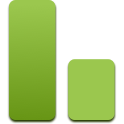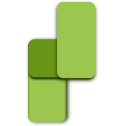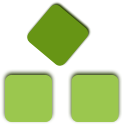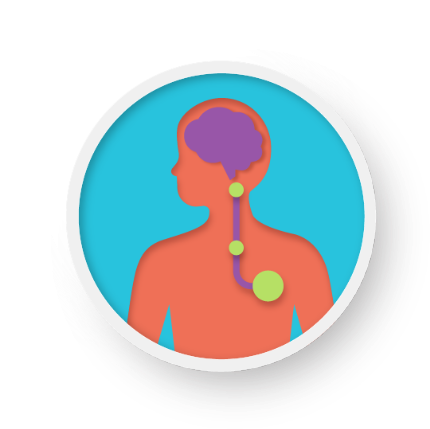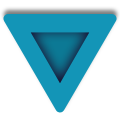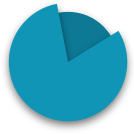Three rare and severe epilepsies and what you need to know
For people with a rare and severe form of epilepsy, it could take nearly 5 years of uncontrolled seizures to get an accurate diagnosis after seizures start. Some people even reach adulthood before receiving a specific diagnosis such as Lennox-Gastaut syndrome (LGS), Dravet syndrome, or tuberous sclerosis complex (TSC). You shouldn't have to wait that long. Not knowing your specific diagnosis could mean years of searching for answers, but knowing earlier could mean all the difference. It can open a door to treatment options, provide access to foundations and grants or financial assistance, connect you with a supportive community of others who can share their experience, and much more.
Why do so many people remain undiagnosed?
Certain seizure disorders such as Lennox-Gastaut syndrome (LGS), Dravet syndrome, and tuberous sclerosis complex (TSC) are not always easy to diagnose. Signs and symptoms may be similar to other conditions, and they're different for everyone—even in the same person over time.
What is LGS?
Lennox-Gastaut syndrome (noun): len’ŏks gahs-tō sin-drōm—a rare form of epilepsy characterized by multiple types of seizures. The peak onset of LGS is between 3 and 5 years of age. Symptoms of LGS may not be present at birth but usually appear in early childhood and evolve over time. People with LGS may have uncontrolled seizures or developmental delays before receiving a definitive diagnosis.
Who gets it?
LGS usually begins in early childhood and can change over time. LGS is typically diagnosed between 2 to 8 years of age, but for some, diagnosis can take longer. Approximately 48,000 people in the US are living with LGS.
Up to 5% of children with epilepsy are diagnosed with LGS.
What causes it?
Some of the known causes include brain injury, infections, brain malformations and a history of infantile spasms. Genetic disorders may also be an underlying cause.
The cause is unknown in 25% to 33% of people who have LGS.
If you suspect you or your loved one has LGS, click here to get connected to a doctor or specialist near you.
Developmental delays
Or delays in intellectual ability and/or physical motor skills
Abnormal electroencephalogram (EEG)
Or brain wave pattern, also called a slow-spike wave pattern (or SSW), which may not be present anymore in adults with LGS
Multiple seizure types
Types of seizures most common in LGS include tonic, atonic, generalized tonic-clonic (also known as grand mal seizures), atypical absence, myoclonic, and focal aware (also known as simple partial seizures) or impaired awareness seizures
Seizures that can change over time
LGS is an ever-changing condition—the types and frequency of seizures experienced during childhood may change during adolescence and adulthood. There is also a chance that seizures may go into remission and later recur
How is LGS treated?
There are many potential treatment options for recurring seizures.
Medications, including antiseizure medications (ASMs)* or other treatments, are used to treat seizures. Certain rescue medications may be used for seizures that last longer than 5 minutes, or occur very close together without breaks
Dietary approaches, including the ketogenic diet, a high-fat, low-carb medical diet that needs to be carefully monitored by a dietitian
For some people, the use of implanted devices or surgical methods may be recommended
It may be time to explore a treatment option and talk to your doctor for more information.
*It may be necessary to try more than one antiseizure medication at a time to effectively reduce the number of seizures because these drugs may work through different targets in the body. These therapies may take a while to start working, and it is not uncommon for people to be on multiple therapies at a time.
Seizures in LGS from childhood to adulthood
80% to 90% of children with LGS continue to have seizures into adulthood.
In young children, the most common types of seizures initially include generalized tonic-clonic (also known as grand mal seizures), atonic, atypical absence, and tonic seizures during sleep. Focal seizures may also occur. Seizures happen several times per week, with most people experiencing daily seizures.
During adolescence and adulthood, the frequency of daytime seizures may decrease; however, drop seizures, which may lead to injuries, may increase. With age, tonic seizures may become the most characteristic seizure type, mainly during sleep. Generalized tonic-clonic (also known as grand mal seizures), atonic, and atypical absence seizures may continue, and tonic seizures may occur while awake.
The importance of early diagnosis, recognition, and treatment
By identifying seizures early on, your doctors can work with you to develop the right treatment plan, which may include a genetic test.
Unrecognized and/or uncontrolled seizures are linked to developmental delays, learning and behavioral disorders, and other negative long-term outcomes.
If you suspect LGS, find a specialist or clinic here.
What is Dravet syndrome?
Dravet syndrome (noun): drä-vā, sin-drōm—a rare, severe, and life-long form of epilepsy that typically begins in the first year of life. It is marked by frequent, often prolonged seizures, developmental delays, speech impairments, and other possible symptoms.
Who gets it?
Dravet syndrome usually begins in infancy, or within the first year of life, but in some cases, a diagnosis of Dravet syndrome may not occur until later in life.
One out of 15,700 infants is diagnosed with Dravet syndrome in the US.
What causes it?
Dravet syndrome is usually caused by a genetic mutation.
More than 80% of those affected have a mutation in their SCN1A gene.
If you suspect Dravet syndrome, click here to get connected to a doctor or specialist near you.
Seizures that can change over time
Although seizures usually start in infancy, this is an ever-evolving condition—seizure types and severity of seizures can change over time
Seizures triggered by various events
Hyperthermia, illness, fever, certain lighting conditions, visual patterns, increased temperature such as from a hot bath, stress, excitement, or exertion may all be common seizure triggers
Developmental delays
Most notably, speech delays may begin around 2 years of age, after the onset of seizures, even if early development was normal
Recurrent and prolonged seizures
Unusually prolonged hemi-clonic seizures (characterized by rhythmic motions on one side of the body) and generalized tonic-clonic seizures (also known as grand mal seizures) during infancy
Other seizure types
Eventually, other seizure types can occur (myoclonic, focal impaired awareness, shorter generalized tonic-clonic and hemi-clonic, atypical absence, and tonic seizures). Please see the seizure types section of the website to learn more
Motor symptoms
Instability and difficult walking, as well as intention tremors (a tremor produced with purposeful movement toward a target)
According to the Epilepsy Foundation, seek emergency medical attention if a seizure lasts for more than 5 minutes or if there is no recovery in between seizures.
How is Dravet syndrome treated?
It may be necessary to try more than one therapy at a time to effectively reduce seizures because each therapy works on different targets in the body.
Medications, including antiseizure medications (ASMs)* or other treatments specifically used to treat Dravet syndrome
Dietary approaches, including the ketogenic diet, a high-fat, low-carb medical diet that needs to be carefully monitored by a dietitian
Vagus nerve stimulation (VNS), which is a device that stimulates the vagus nerve to reduce seizure frequency
It may be time to explore a treatment option and talk to your doctor for more information.
*It may be necessary to try more than one antiseizure medication at a time to effectively reduce the number of seizures because these drugs may work through different targets in the body. These therapies may take a while to start working, and it is not uncommon for people to be on multiple therapies at a time.
Seizures in Dravet syndrome from infancy to adulthood
The most common types of seizures initially include unusually long hemi-clonic and generalized tonic-clonic seizures (also known as grand mal seizures). Infants may also experience recurrent seizures that last more than 5 minutes or seizures that occur close together without recovery periods in between.
By approximately 2 years of age, myoclonic, focal impaired awareness, shorter generalized tonic-clonic, and hemi-clonic seizures may occur. Obtundation status may occur after 2 years of age, a type of long-lasting, nonconvulsive seizure marked by less alertness.
During early childhood, myoclonic, focal impaired awareness (also known as complex partial seizures), and atypical absence seizures may occur.
During adolescence and adulthood, people may continue to have uncontrolled seizures: focal, generalized tonic-clonic (also known as grand mal seizures), atypical absence, myoclonic, and tonic seizures. Nighttime generalized tonic-clonic seizures may become more common, and seizures are less frequently triggered by hyperthermia.
The importance of early diagnosis, recognition, and treatment
By identifying seizures early on, your doctors can work with you to develop the right treatment plan, which may include a genetic test.
Unrecognized and/or uncontrolled seizures are linked to developmental disabilities, learning and behavioral disorders, and other negative long-term outcomes.
If you suspect Dravet syndrome, find a specialist or clinic here.
What is TSC?
Tuberous sclerosis complex (noun): too-ber-uhs, skli-roh-sis, kom-pleks—a highly variable genetic disorder that is most often not inherited, but can be passed on from the person’s parent(s). TSC causes noncancerous tumors to develop in many different organs, including the brain, skin, kidneys, lungs, heart, and eyes. TSC affects each person differently, with signs and symptoms ranging from very mild to severe.
Who gets it?
TSC symptoms often begin to show up during infancy or childhood, but for some, diagnosis can take longer.
Up to 50,000 people have TSC in the US.
What causes it?
TSC is associated with a disease-causing mutation, or change, in the TSC1 or TSC2 gene.
Two-thirds of TSC cases are due to spontaneous mutations while one-third are inherited.
If you suspect TSC, click here to get connected to a doctor or specialist near you.
What are the defining characteristics of TSC?
The most common initial signs and symptoms of TSC include
Cardiac tumors, which can be detected by a routine prenatal ultrasound
White spots or patches on the skin and angiofibromas, or red spots that look like acne
New onset or history of seizures/infantile spasms
How common are seizures in TSC?
Most people with TSC will experience seizures, and some types of seizures are more common than others. Nearly 100% of people with TSC develop recurring seizures after having their first seizure.
About 85% of people with TSC experience seizures throughout their lifetime
1 in 3 infants with TSC develop infantile spasms (also known as epileptic spasms)
Before the age of 2, infantile spasms (also known as epileptic spasms) and focal seizures are the most common. Other seizure types may follow as children get older
Up to 82% of people with TSC experience focal seizures
12% of adults with TSC, having no history of childhood seizures, can start having seizures as an adult
How is TSC treated?
There are many potential treatments used to reduce the frequency of seizures.
Medications, including antiseizure medications (ASMs)* or other treatments, are used to treat seizures
Dietary approaches, including the ketogenic diet, a high-fat, low-carb medical diet that needs to be carefully monitored by a dietitian
Vagus nerve stimulation (VNS), which is a device that stimulates the vagus nerve to reduce seizure frequency. Some people with TSC may not respond to these treatment approaches, and for some, surgery may be required to reduce seizure frequency
It may be time to explore a treatment option and talk to your doctor for more information.
*It may be necessary to try more than one antiseizure medication at a time to effectively reduce the number of seizures because these drugs may work through different targets in the body. These therapies may take a while to start working, and it is not uncommon for people to be on multiple therapies at a time.
Seizures in TSC from childhood to adulthood
People with TSC can have their first seizure at any point during their lifetime.
Seizures that happen during childhood may be subtle and may look very different from those that occur in adults. The first seizures experienced before the age of 2 are most commonly infantile spasms (also known as epileptic spasms), focal seizures, or a combination of both. Over time, infantile spasms may change to other seizure types.
It is important to be aware of adult-onset seizures, since some people may not be diagnosed with TSC until adulthood if signs and symptoms are mild. Seizures may also stop and start again later in life or change into one of the other seizure types.
In both children and adults, seizures can change in appearance depending on where they originate in the brain and how they spread over time. Focal aware seizures (also known as simple partial seizures) can progress to focal impaired awareness seizures (also known as complex partial seizures) or possibly generalized seizures.
The importance of early diagnosis, recognition, and treatment
By identifying seizures early on, your doctors can work with you to develop the right treatment plan, which may include a genetic test.
Unrecognized and/or uncontrolled seizures are linked to developmental disabilities, learning and behavioral disorders, and other negative long-term outcomes.
If you suspect TSC, find a specialist, clinic, or center of excellence here.


